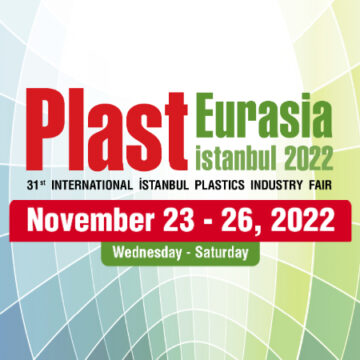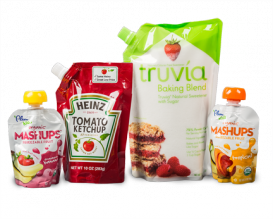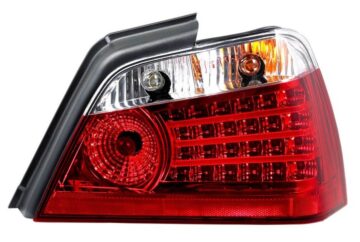Plast Eurasia 2022 – International Exhibition / Istanbul – Turkey


Polypropylene (PP) was introduced to the market in the late 1950s and is the most widely used economic-commercial thermoplastic that has grown and developed the fastest in the world. PP is a polymer with multiple and diverse applications that has been used in producing fibers, films, household appliances, and car bumpers. In many applications, PP has replaced other materials such as glass fibers and thermoplastics reinforced with minerals and metals. PP is synthesized by polymerizing polypropylene monomer with a titanium-based catalyst. To start the polymerization reaction, a secondary auxiliary catalyst (triethylaluminum) is added to the reaction medium and hydrogen is used to control the molecular weight of the polymer inside the reactor. This reaction is done using a slurry process or a gas type process. There are three structures of PP: isotactic, syndiotactic and atactic. The main structure of PP is isotactic semi-crystalline material. This structure has good mechanical properties, such as stiffness and tensile strength. These properties can be enhanced by using nucleating agents or fillers such as talc, calcium carbonate or glass fibers. Syndiotactic PP is produced through polypropylene monomer units that are alternately connected to each other in a head-to-tail manner. This structure is more flexible than the isotactic, but it has better impact resistance and more clarity.
Atactic PP (hard wax-amorphous monomer) is a by-product of the PP production process. This polymer is used in tarring the surface of roofs and making adhesives in the shoe industry.
All three PP structures are very sensitive to oxidation caused by the presence of tertiary hydrogen. PP is stabilized and resistant to degradation and thermal decomposition by adding type 1 and type 2 antioxidants. Special neutralizing agents are also used to stabilize small amounts of chloride ash produced during the process. Other special additives are also used, such as antistatic agents, slip agents, and UV stabilizers. PP is sold commercially as homopolymers, random copolymers, or impact copolymers. Its physical properties are changing from a polymer with high strength and stiffness to a flexible polymer with lower strength but greater toughness. PP homopolymer has the highest melting point and hardness along with a wide range of melt flow properties.
Copolymers with small amounts of ethylene in their structure have lower crystallinity are flexible, have a lower melting point, and show improved and better impact resistance properties.
Impact-resistant copolymers are copolymerized and produced through the addition of ethylene in the polymerization reactor. Copolymer (ethylene) acts as a plasticizer and process aid and is uniformly dispersed throughout the homopolymer matrix to obtain a heterophase polymer, i.e. two heterogeneous phases. This copolymer has very high impact resistance even at low temperatures. Copolymers with high impact resistance are prepared through pre-blending of copolymer, additives and EPDM rubber.
The chemical structure and general properties of PP homopolymer are as follows:

PP is a light material with a specific mass lower than water obtained from the polymerization of propylene gas. PP is resistant to moisture, oils and common solvents and melts at about 170°C.
Today, PP has many types with different molecular weights and additives to be used in appropriate applications. PP is solid at room temperature. According to the order of its molecules, PP shows different properties.
PP is classified in the family of semi-crystalline thermoplastics. Isotactic and syndiotactic PP have the ability to crystallize while atactic PP has an amorphous structure.
The main parameters that determine the properties of this polymer are molecular weight and its distribution, polymer melt flow index, isotacticity percentage, as well as polymerization process and type and amount of additives.
For the production of most of the common medium weight fibers, the molecular weight is in the range of 200,000 to 350,000.
PP has a high degree of crystallization, which reaches up to 70%. PP is sensitive to ultraviolet radiation and is destroyed. To prevent this unwanted process, UV light stabilizers are added.
PP is one of the polymers with diverse performance that is used in the production of various plastic parts as well as in the fiber industry. Due to its high crystallinity and non-polar aliphatic structure that does not contain any active agent, this polymer cannot be dyed by conventional methods. Therefore, the polymer mass dyeing method is used to produce colored fibers, which itself has limitations in terms of diversity, color transparency, the possibility of dyeing in each stage of the production of textile products. Therefore, many efforts have been made in the field of producing modified PP fibers that can be dyed with conventional methods and many patents have been registered. Most of these modifications are based on the addition of factors such as PP (in the form of linking on the molecular chain) to improve the absorption of dyes. However, modified PP fibers have not yet been supplied to the market.
Advantages of PP
• Lighter stability with low density
• High melting point
• End use temperatures around 212°F
• Good chemical resistance to hydrocarbons, alcohols and non-oxidizing reagents
• Good fatigue resistance (in hinged doors or caps)
PP can be processed and shaped through all the special thermoplastic resin process methods such as injection molding, compression molding, blow molding, extrusion, film casting and thermoforming.
Disadvantages and limitations of PP
PP is destroyed by UV. It is Flammable, but commercial FR (flame retardant) grades are available. PP is attacked by chlorinated and aromatic solvents.
Applications of PP
PP is processed by various methods such as injection molding, blowing, rotation and extrusion, which depending on the type of use can contain additives, anti-oxidation, UV stabilizers, anti-static materials, nucleating agents, pigments, fire-retardants, fillers, etc.
PP is mostly used in the injection molding process and ranks second in the fiber industry. The consumption of PP fibers has increased in the last decade and it is the second most used synthetic fiber after polyester. PP has been marketed in the form of single fibers and threads for the textile industry. Very fine fibers of PP are used for the production of thermobonding and spinning. Medium fineness fibers are used for spinning and production of knitting and tricot yarn, and its thick fibers are used for the production of floor coverings. The favorable properties and cheapness of these fibers have led to their widespread use in the field of non-woven textiles in structures. PP filament yarn is mainly produced as BCF (Bulk Continuous Filament) yarn, which is used in the production of floor coverings. Its fine yarns are also produced for various applications, especially as industrial yarns, but their use in textiles is limited due to the impossibility of dyeing and their weak texuring ability with the common methods of texuring fine yarns (virtual warping method).
This polymer is used in the automotive industry, interior decoration, propellers, car flooring, packaging and fiber industries. Carpets, artificial grass covers, anti-rot rope and fishing nets are other applications of polypropylene.
Flexible packaging films and biaxially oriented packaging films.
Single strand oriented and stretched and thin strips for textiles, carpet weaving, insulated medical fabrics and backings of woven carpet.
Interior components, bumpers, spoilers, exhaust systems, under-hood components, wheel head protective hose
Sanitary products, household goods, medical trays, strainers , and hollow containers.
Caps, upper caps, sprays, rigid and semi-rigid packaging, videocassette frames, toys, electrical hardware, household appliances and their components, furniture for field trips and outside the city in the open air, suitcase, etc.
Molded bottles by injection blow molding method with excellent rigidity, impact resistance and transparency.

Chemical structure and general properties of acrylic are as follow:

PMMA Properties
Acrylics are composed of polymers and copolymers whose main monomers belong to the two families of ester-acrylates and methacrylates. Transparent and hard acrylic sheets are made from methyl methacrylate, while extrusion and molding resins are made in a continuous solution of methacrylate copolymerized with a small percentage of acrylates or methacrylates.
Methyl methacrylate is produced through a two-step process in which acetone and hydrogen cyanide are reacted to give acetone cyanohydrin. Then, this compound is heated with methanol in the presence of concentrated sulfuric acid to obtain methyl methacrylate monomer. Acrylic monomers are polymerized through free radical polymerization processes initiated by peroxide initiators and form poly (methyl methacrylate). A monomeric initiator which become active at higher temperatures causes a reaction to be progressed that is very intense and exothermic, so that the released heat must be somehow removed from the system.
Different formulations of plastics differ both in molecular weight and in basic physico-mechanical properties such as melt flow index (MFI), thermal resistance, and toughness. There are special formulations that create opaque surfaces or absorb or transmit UV light. They are also available in a full range of colored resins in transparent, semi-transparent (translucent) and opaque forms.
Commercial types of acrylic with high impact resistance are available for injection molding and extrusion. These types of compounds consist of a hard acrylic phase and an acrylic modifier as a soft phase. Acrylic polymers have excellent optical properties and resistance to weathering and environmental conditions. Colorless acrylic resin can transmit white light up to 92%. Acrylics show a very high resistance to sunlight and long-term contact with various elements.
The low strain optical coefficient of acrylics, combined with their ability to be molded under very low stress, make them an ideal material for making video discs. Extruded sheets of a commercially available impact-modified acrylic exhibit excellent thermoforming properties and can be stiffened with glass-reinforced polyester so that they can be used on the inside of bath tubs. The high flow type has the best transparency because it does not contain acrylonitrile (AN), which makes this polymer the most suitable for medical applications where clarity is most important.
Acrylic plastics can be cleaned with solutions of mineral acids, alkalis, and aliphatic hydrocarbons, but chlorinated and aromatic hydrocarbons and ketones will degrade acrylic plastics.
Advantages
Acrylic polymers, such as poly (methyl methacrylate), show excellent optical and weather-resistant properties, that is, when they are exposed to atmospheric conditions, they are highly resistant to weathering and environmental conditions (temperature, pressure, humidity or steam water). They are also available in a wide variety of colors of transparent, translucent, and opaque.
• Excellent optical clarity
• Excellent surface hardness
• Excellent tolerance to various weather conditions, excellent resistance to weathering and atmospheric conditions, high resistance to sunlight.
• Rigid and inflexible with good impact strength
• Excellent dimensional stability and low in-mold shrinkage
Disadvantages and limitations
Applications